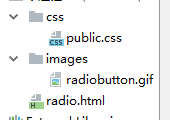I am trying to find a solution for resetting user's passwords (all users, not just the authenticated user) in Azure Active directory via a non-interactive login.
Right now it seems this is only available via powershell's MSOnline Set-AzureADUserPassword cmdlet using a Service Principal login.
I'd like to find a solution using an API Endpoint so I can use C#. The closest solutions I've found was Microsoft Graph API but after setting it up, I realized I can only reset the passwords via an interactive login and consent flow. It's not allowed via non-interactive.
My next attempt is to use Azure AD endpoint but my concern is I am seeing the same message that recommends that we use the Microsoft graph API. Does this means azure ad endpoint will be going away?
Is there a recommended approach without using PowerShell?
You could update user's passwordProfile property to reset user's password :
PATCH https://graph.microsoft.com/v1.0/users/{id | userPrincipalName}
Content-type: application/json
Authorization: bearer TOKEN
{
"passwordProfile":
{
"forceChangePasswordNextSignIn":false,
"password": "XXXXXXXXX"
}
}
As explanation in document :
When updating the passwordProfile property, the following permission is required: Directory.AccessAsUser.All.
Then you could use Resource Owner Flow as the requirement needs non-interactive login . To enable Directory.AccessAsUser.All delegate permission, you should :
Add Microsoft Graph's Access directory as the signed in user permission in Required permissions blade of your Azure AD app :

That permission needs admin consent , please click Grant Permissions button with your admin account .
Then you could use Resource Owner Flow to acquire access token for Microsoft Graph , Directory.AccessAsUser.All permission allows an Admin to change another user's password in your tenant .
Does this means azure ad endpoint will be going away?
Currently , Microsoft Graph supports most of the directory features that Azure AD Graph supports, but not all. Please refer to Gaps between Microsoft Graph and Azure AD Graph




